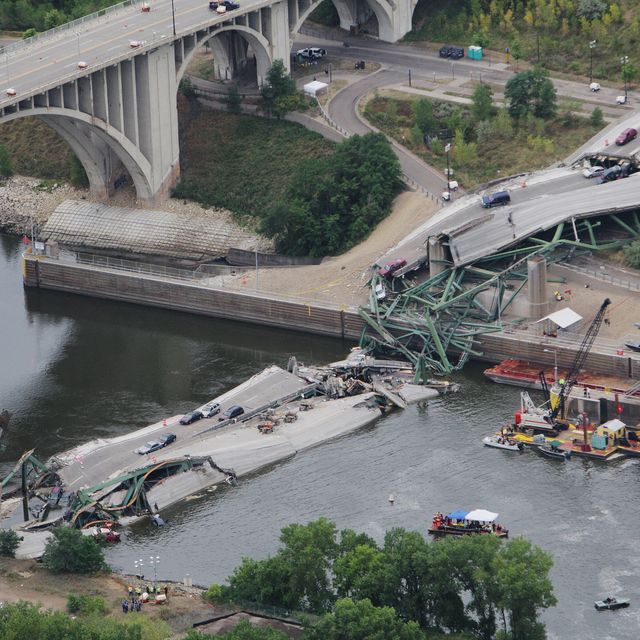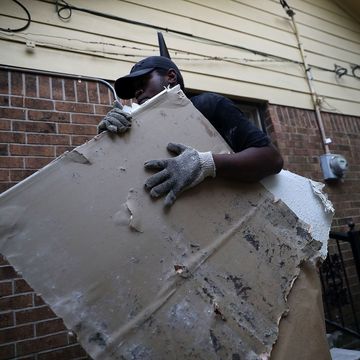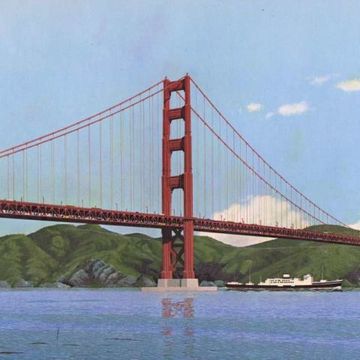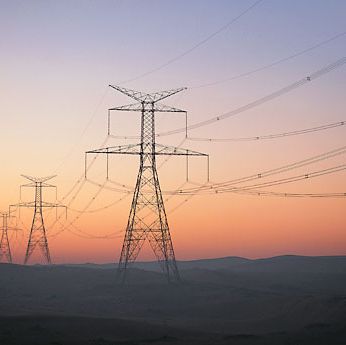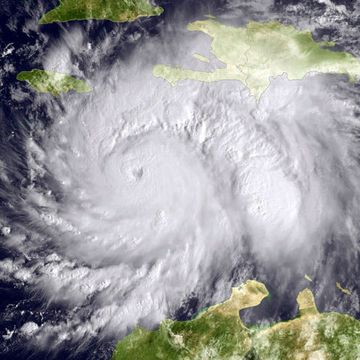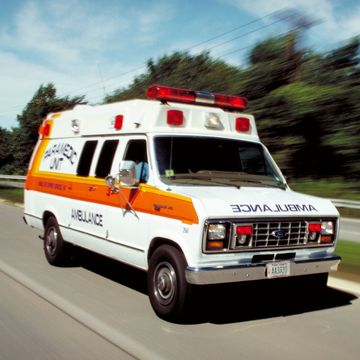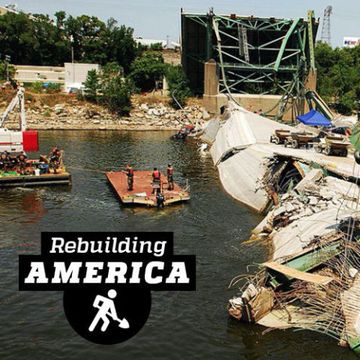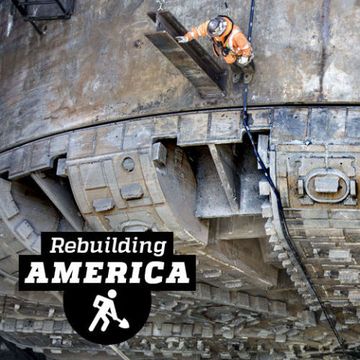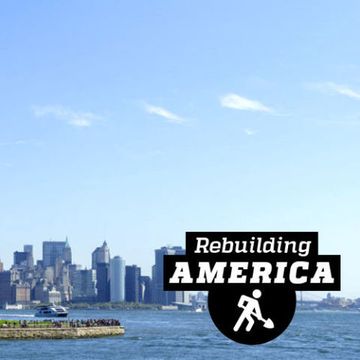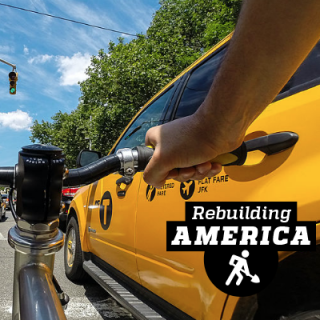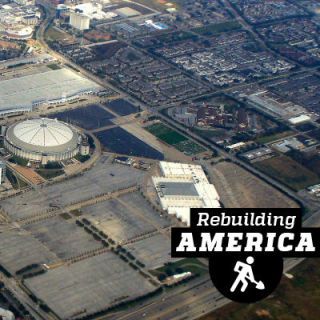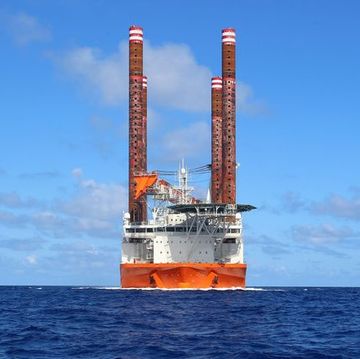A raw wind is cutting across the Mississippi River, freezing exposed skin at the sprawling construction site for the St. Anthony Falls Bridge in Minneapolis. The project is hurtling toward completion. Three crane drivers work at their controls on the south side of the river, while on the opposite bank four of the machines blend into the towering piers that will support the span. Hundreds of workers labor here in staggered 10-hour shifts, with some crews clocking 60 hours a week.
The urgent pace is the only sign of the collapse of the old I-35W bridge, which occurred on this spot six months ago. The debris was quickly cleared away, and in the aftermath, the Minnesota Department of Transportation (Mn/DOT) pledged to open a new bridge by Dec. 24, 2008. In a business where it can take years just to get a permit, this is an improbably ambitious schedule. "We know that eyes are on us, but that's a good thing," says John Chiglo, Mn/DOT's manager for the project. "Re-establishing public trust is something we felt needed to be done. Something was lost that day, when the bridge collapsed."
And not just in Minnesota. To many Americans, the I-35W disaster wasn't an isolated tragedy, but the latest in a barrage of infrastructure failures—from the northeastern blackout in 2003 and the breached New Orleans levees in 2005 to falling concrete in Boston's Big Dig in 2006. Perhaps the nation had passed a tipping point and was entering a period of steep physical decline.
When the bridge crumbled, Popular Mechanics was midway through a yearlong investigation of the country's infrastructure, focusing on solutions being developed and put into practice right now, at locations such as a massive lock system on the Ohio River, an electric-grid research facility in Washington state and the country's busiest port, located in California. We found promising technologies and innovative projects.
But there are larger lessons to be learned as well. Americans need to face the sobering reality that the country's infrastructure is in trouble. Most of it was built in the 20th century, during the greatest age of construction the world has seen. The continent was wired for electricity and phone service, and colossal projects, including the Hoover Dam, the Golden Gate Bridge and the interstate highway system, were completed—along with thousands of smaller bridges, water tunnels and more. We are living off an inheritance of steel-and-concrete wonders, grander than anything built by Rome, constructed by everyday giants bearing trowels, welding torches and rivet guns.
To fix our infrastructure, from dilapidated levees to congested roadways and ports, the American Society of Civil Engineers (ASCE) has estimated that the country needs to spend $1.6 trillion over five years. Only $1 trillion of that, the organization says, has been allocated or promised. Accepting those numbers, we need an additional $600 billion to reverse the slide of infrastructure, a figure that seems as difficult to produce as it is to comprehend.
Or is it? Spread over five years, ASCE is calling for $120 billion per year. The economic stimulus package signed into law in February is sending $168 billion out to individuals to spend, in a best-case scenario, on new TVs and restaurant meals. That money could have bought a lot of concrete. While more funds are needed, how they're spent is equally important. New information technology, fresh engineering and advanced materials can help us not just restore, but improve our infrastructure in the coming century. Planned and managed properly, next-gen projects can be smarter and more resilient than what came before. Engineers and construction workers know how to get the job done. But first, we must gather the national will.
Goal: Sacramento-San Joaquin River Delta, California
PROGRESS REPORT: More than a thousand miles of eroding levees in the Sacramento-San Joaquin River Delta protect the freshwater supply for two-thirds of California residents. Left alone, the levees will fail. One solution proposed by researchers at the Public Policy Institute of California: Build a separate structure to carry fresh water through the region, and let the natural flood cycle return to portions of the delta.
On March 14, 2006, Ka Loko Reservoir was full. Heavy rains had swamped the island of Kauai, Hawaii, since February, triggering flash floods and road closures. Shortly after 5 am, the dam breached and 400 million gal. of water exploded into Wailapa Stream, sweeping away trees, cars and two houses. Among the three bodies later identified was that of 22-year-old Christina MacNees, who was seven months pregnant. Four victims, including 2-year-old Rowan Fehring-Dingwall, have yet to be found.
There are more than 83,000 registered dams in the United States, and federal law requires them all to receive regular inspections. When the Ka Loko Dam breached, it had never been examined. A civil probe found that the dam's owner had been uncooperative—inspectors made two attempts but never gained access. They may have been lulled by a bureaucratic blind spot: Years before, Hawaii had classified the dam as "low-hazard," implying that even if it failed, lives wouldn't be at risk. "It's called hazard-classification creep," says Dan Johnson, a civil engineer with GEI, a geotechnical consulting firm that specializes in water resources. "When a lot of dams were built, they were considered low hazard. If one failed, it would maybe wash out an antelope. But today, that's a city."
In addition, the database of dams ignores some low-probability/high-consequence events, according to Victor Saouma, a professor of civil engineering at the University of Colorado in Boulder. "If a dam were to collapse following an earthquake in California, we're talking about thousands of people dying," Saouma says. Researchers haven't determined which dams are in greatest danger, let alone how to fix the problem.
This is an age in which banks track millions of accounts on a second-by-second basis. Ordinary people can call up satellite images of every corner of the globe in seconds, day or night. So it's remarkable that the victims of Ka Loko Dam died—and more people could die—because engineers lack up-to-date data. (And it's not just dams. Three years after Hurricane Katrina, there's no central registry of the nation's levees. It's unknown how many thousands of miles of earthen walls may be on the verge of collapse.)
There is a better way. Hawaii is working with the Pacific Disaster Center to develop computer models for predicting the consequences if a dam were to fail. Such models, which incorporate weather and mapping data, should be employed nationwide. New technology can help—the Army Corps of Engineers has begun using remotely operated vehicles to inspect underwater structures. Other tools have been developed but aren't yet in use as broadly as they could be. These include GPS sensors to detect subtle shifting of a dam's structure, and geographic information systems to make it easier for officials—and perhaps concerned citizens—to access the data.
Fixing the country's dams will also take a sense of urgency. Kentucky's Wolf Creek Dam, upstream from Nashville, Tenn., is considered one of the most dangerous in the country. In 2005, the Army Corps of Engineers noticed an alarming amount of seepage under and around the dam, despite major repairs in the 1960s and '70s. A permeable limestone foundation supports the structure; it dates from 1952, and engineers say the design wouldn't be approved today. Crews have begun adding concrete grout to the foundation (about 500,000 gal. by early 2008) and installing an additional concrete wall. However, it remains an open question whether the dam can hold out until the project is completed in 2012.
Goal: For two weeks in July 2006, California baked in a heat storm of unrelenting, 100-degree-plus temperatures. Air conditioners ran day and night, overtaxing the electrical grid.
On July 24, when power demand hit more than 50,000 megawatts—the highest level in state history—transformers started failing. Utility Pacific Gas & Electric was quickly overwhelmed, and more than a million people lost power, some for days. When the heat finally broke, it was blamed for 141 deaths. "Our grids today are more stressed than they have been in the past three decades," says Kevin Kolevar, assistant secretary for electricity delivery and energy reliability at the Department of Energy. "If we don't expand our capacity to keep up with an increase in demand of 40 percent over the next 25 years, we're going to see healthy grids become increasingly less reliable." Today, with the grid operating flat-out, any disruption—like the downed transmission line that sparked the 2003 blackout in the Northeast—can cripple the network. Building more power plants will give grid operators a larger safety margin, and new technologies can make it easier to exploit renewable energy sources such as wind farms and solar arrays. "Wind power is erratic. It goes when the wind blows, which is often when demand is at its lowest," says Jim Detmers, vice president of operations for California ISO, which directs the state's grid. "We need new tools to manage that flow." One answer is to incorporate systems to store the excess power, instead of feeding it directly into the grid. Advanced batteries, such as new Japanese-built sodium-sulfur models, can store 5 megawatts. The grid in Fairbanks, Alaska, is backed up by the world's biggest battery, a 40-megawatt NiCd (nickel-cadmium) system that came online in 2003—and was called into service 82 times in 2006 alone. Flywheels are being developed to provide instantly accessible stored energy, while ultracapacitors can provide "wind-power smoothing." Cristina Archer, a professor of civil and environmental engineering at Stanford University, has proposed a different approach. By analyzing data from existing wind farms in the Midwest, Archer and a partner found that turbines spinning at different times can help fill gaps in the supply. The study determined that if 19 of those farms were networked together, grid operators could safely rely on more than a third of the total power generated—it would become as dependable as electricity from a traditional power plant. End users may help, too. Last year, researchers at Pacific Northwest National Laboratory (PNNL) conducted a pilot program in Washington state in which households were paid to let grid operators temporarily reduce the power to their homes. The idea was to simulate a peak-demand situation, when even a 1-second drop in power usage can prevent a blackout. A similar test involved clothes dryers designed by Whirlpool to cycle off in response to conditions in the grid. The idea is being tried with other appliances, as well—imagine a refrigerator compressor that delayed kicking on for a few minutes when demand was spiking. "It creates a shock absorber for the power grid," says Rob Pratt, who led both exercises as the head of PNNL's GridWise research program. "You cushion the blow with demand and give grid operators time to respond." The results: a 15 percent reduction in total demand through real-time incentives and a 20 percent drop through smart appliances. Adopted nationally, such innovations could be revolutionary. They might eliminate the need for at least some new coal-fired power plants—and they would make the grid far more resilient, able to handle adversity without going into a tailspin.
Goal: St. Anthony Falls Bridge, Minneapolis
PROGRESS REPORT: Minnesota officials pledged to quickly replace the collapsed I-35W bridge. The new span, due to open on Dec. 24, 2008, is being built using high-performance concrete and 15.8 million pounds of rebar, much of it treated to thwart corrosion. Sensors will watch for structural problems. The bridge will be 1223 ft. long and carry 10 lanes of traffic. It is designed to last 100 years. Click here to read more about the new bridge.
At 6:05 pm on Aug. 1, 2007, several lanes on Minneapolis's I-35W bridge were shut down for repaving, and rush-hour traffic was at a crawl. Peter Hausmann, a 47-year-old computer security specialist, was on the phone with his wife when the main span collapsed, pouring his car into the water 108 ft. below. He was among 13 people killed; 145 more were injured.
"The I-35W bridge was labeled 'structurally deficient' for 16 years," says Jesus de la Garza, a professor of civil and environmental engineering at Virginia Tech. "That meant it was due for reconstruction at some time in the future." Had the work taken place, the catastrophe wouldn't have occurred. (According to a preliminary finding of the National Transportation Safety Board [NTSB] released in January 2008, steel gusset plates had fractured, owing mainly to a flaw in the original design.) There are 153,521 structurally deficient or functionally obsolete bridges in the United States, and, like the I-35W bridge, many remain on the nation's to-do list for decades. "The crisis is deferred maintenance," de la Garza says. "We have too much to build and not enough funding."
However, money alone isn't enough. In July 2006, Milena Del Valle, a 38-year-old mother of three, was killed by 26 tons of falling concrete in Boston's just-completed Big Dig roads project. Funding wasn't the issue—the project had run up massive cost overruns, bloating from a projected $2.6 billion to an eventual $14.8 billion. The problem? According to the NTSB, a contractor used an inappropriate epoxy for the ceiling tiles. It was one more blunder on a project where a confusing web of contractors and subcontractors seemed to undermine decision making and accountability. "The culture was not to have a large number of people, inside or outside the organization, ask questions," says David Luberoff, executive director of Harvard's Rappaport Institute and co-author of Mega-Projects: The Changing Politics of Urban Public Investment. "Management and culture really matter."
Elsewhere, contractors and government officials are finding more effective ways to manage projects. In April 2007, after a fuel tanker truck burst into flames below a congested overpass in Oakland, Calif., triggering a massive collapse, authorities expected repairs to take 50 days. The contractor, C.C. Myers, Inc., claimed it would finish in half that time, to secure the maximum early completion bonus of $5 million. What followed was a master class in efficiency, as the firm took financial risks, such as racking up overtime costs, while showing a rare level of collaboration with subcontractors and transportation officials. The result: The overpass reopened just 17 days after work started, or 33 days ahead of the deadline.
Virginia's Department of Transportation has turned to privatization to improve its highway maintenance. Instead of providing a detailed plan on how to repair a stretch of road, officials assign performance targets, and then ask firms to assume ownership of the route for as long as 10 years. "You don't tell the contractor how to maintain these roads and bridges," says de la Garza, who has helped the state develop the initiative. "The contractor has to be innovative in how they go about maintaining performance."
Innovation and accountability were built into the St. Anthony Falls Bridge project in Minneapolis at the outset. Normally, officials determine the design of a new project before taking construction bids. To replace the I-35W bridge, Mn/DOT opted instead for a "design-bid" approach. Teams provided their own plans, along with guaranteed time frames and detailed engineering credentials. The winning team—Flatiron-Manson and FIGG—didn't submit the lowest price or the shortest schedule, but it did demonstrate the most know-how.
In winter, the warmest place to watch the bridge come together is from inside a series of five-story-tall hangarlike structures where crews are constructing massive sections of the span. Heaters keep air temperatures at 40 degrees to help the concrete cure properly. When one section is finished, workers slide the house down the line, leaving a trail of monoliths in their wake. Everything seems to happen simultaneously, and that's been true since work began. When test shafts were drilled in November, engineers realized they'd need to adjust the placement of the footings by 5 ft. On another project, getting approval might have taken weeks; here, they made the appropriate change and kept moving.
Outside the warming houses, a high-pitched buzz pierces the whine of generators and heavy equipment. Against the flat winter sky, a black dot grows bigger—an unmanned aerial vehicle is coming in for a landing in a nearby field. This toy-size radio-control plane has been on duty since construction started in the fall, capturing aerial images that the contractor uses to help stay on schedule.
The work site is full of such innovations. There's an old engineering adage: You can have it good, fast or cheap—pick two. At a projected cost of more than $230 million, the St. Anthony Falls Bridge will not be cheap, but more than money is at stake. Plans call for high-performance concrete, a structural monitoring system and a life span of 100 years. If it comes in on time, the bridge will prove what engineers and workers can do when they have the freedom to innovate and the resources to get the job done. On the riverbank where everything fell apart, a model for building the future may be coming together. America is watching.
Goal: Ports of Los Angeles and Long Beach
PROGRESS REPORT: In 2007, California's twin ports of Long Beach and Los Angeles received more than 8000 vessel calls and handled 15.7 million containers, making the complex the country's largest shipping gateway—and the fifth busiest in the world. Traffic congestion and air pollution are major concerns of local residents. To reduce truck traffic, the ports helped develop a 20-mile dedicated rail corridor that carried 4.7 million containers last year. The ports are laying rail line onto docks to further reduce the need for trucks, and they plan to operate 25 electric-ready berths by 2011.
